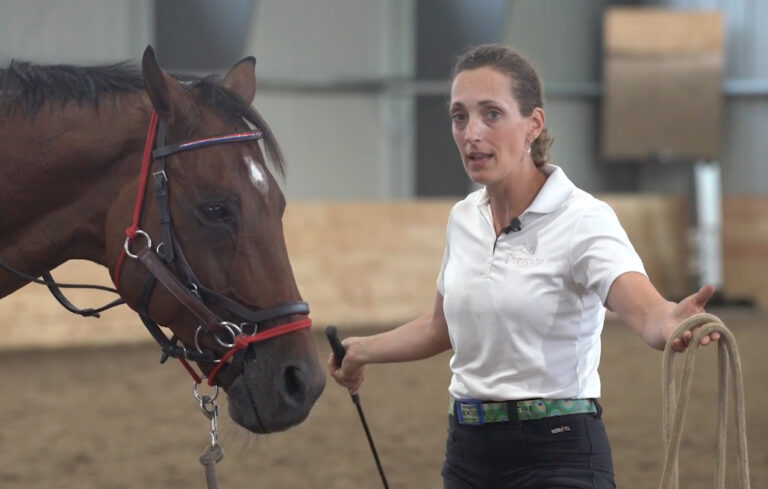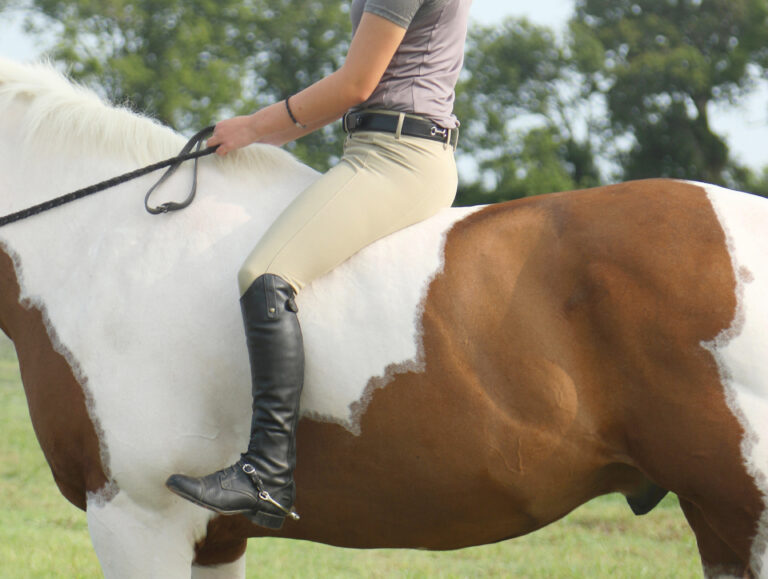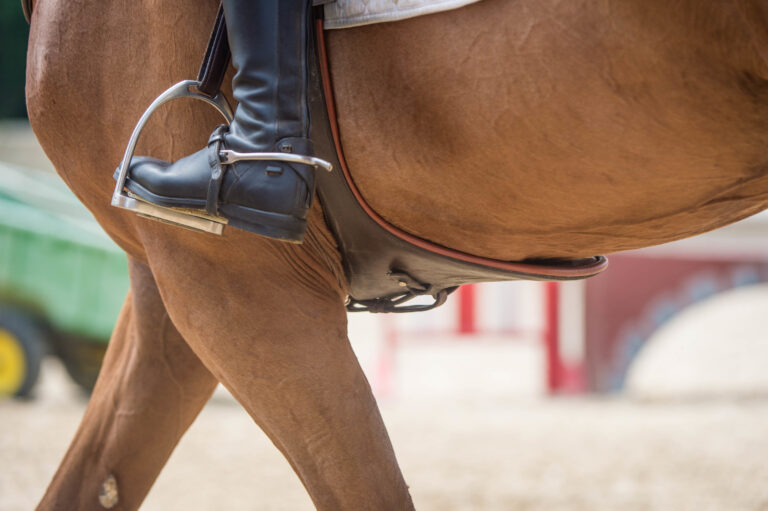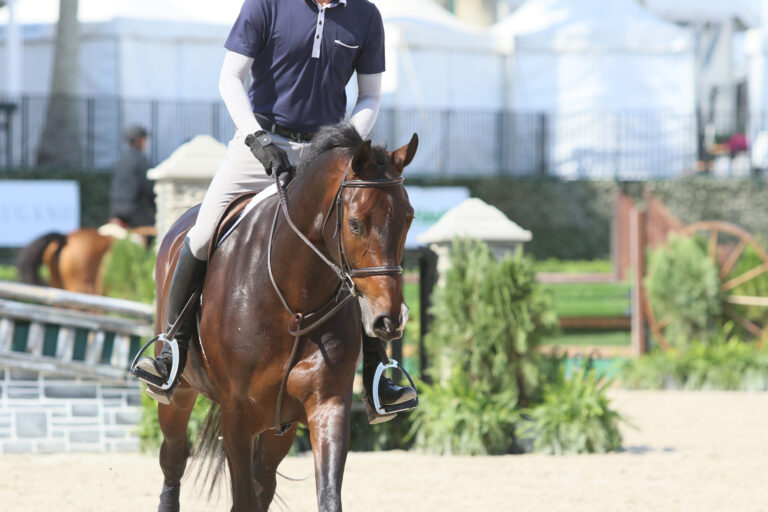This might be my favorite time of year, when most of the big eventing competitions are over. I think of this period as “Now’s my chance.” While the horses in my program are having a much-needed rest, their riders and I are planning for future success.
By “success” I don’t necessarily mean winning, although that helps. I really should say I am looking for “improvement.” I go through this process regardless of the current level of the horse and rider. I want my riders to set goals for themselves, but they have to be realistic goals. If we are dealing with a 6-year-old Thoroughbred who ran until he was 4, it is rarely realistic to say, “Next spring I want to win a CCI*.” The Thoroughbred might have successfully completed a competition at the Preliminary level at this point, but he is not yet competitive.
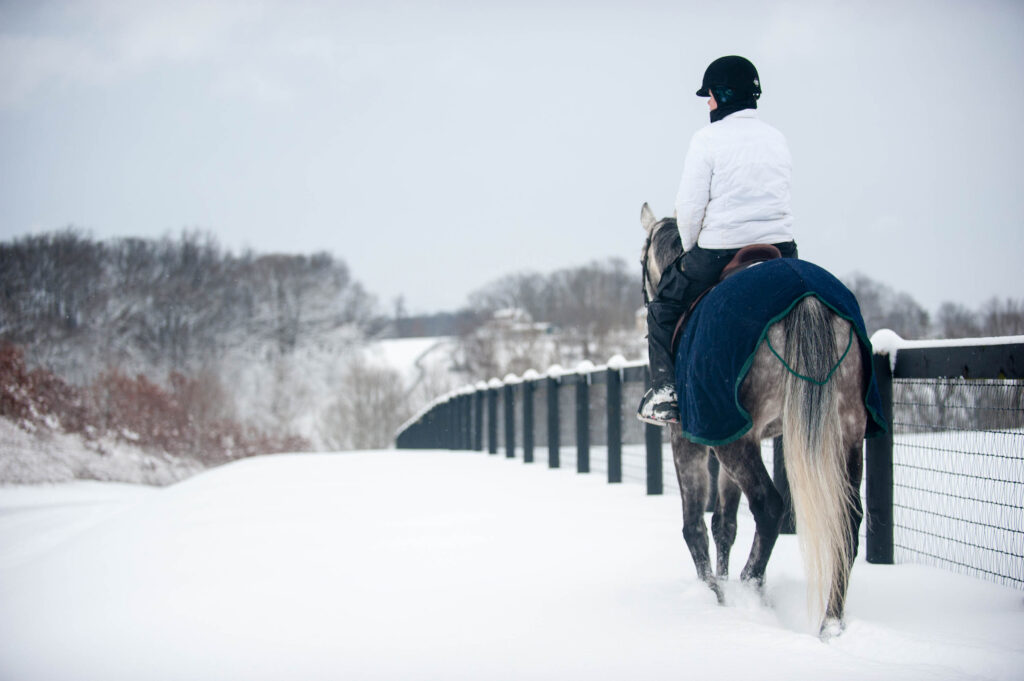
Chances are this Thoroughbred’s dressage is still very much a work in progress, and although he’s obviously talented, his youthful exuberance causes him to have an occasional show-jumping knockdown. His talent shines on cross country, but most riders and trainers will not have let him run at speed yet. That will come with maturity. Many times, horses of this type will have to work their way up the levels with few top-five placings to show for their efforts until they get into the rarified atmosphere of three- and four-star competition. Despite the change in format from Classic to short, at the middle and upper levels stamina and speed are still determinative factors, and this is when Thoroughbreds start to show their talent and the results of their riders’ careful, years-long preparation.
Although I am proud that I can help horses and riders at every level, I tend to keep my eyes on the upper levels of eventing, and most of the upper-level event horses are 70 percent or more Thoroughbred. I counsel my riders that if a nice non-TB prospect comes along, they should keep the horse’s breeding in mind. Non-TB horses usually find the dressage and show jumping easy, but take a bit longer to understand the cross country and rarely have the ability to gallop at speed.
A Chance To Improve Soundness and Fitness
I mentioned earlier that my horses take a break from competing at this time of year. I am a bit old school about this. I still think in terms of a two- or three-month competition season followed by a rest period and then by another period of preparation for competition. As you start your break with your horse, get your vet to examine him. Now’s your chance to have your vet diagnose and treat any lingering physical problems he might have.
When you start conditioning for your horse’s new season, I want you to use the most powerful tool you have: the walk. That’s right, I want you to walk your horse into shape. My reasoning is simple. Both the walk and the gallop are four-beat paces. When you walk your horse, you are galloping in slow motion with little concussion and a low risk of injury. Thus, long walks during this time give your horse the strength and fitness to perform better in the coming year.
At this juncture you may be thinking, “Walk? But Jim, what about trot sets?” The vast majority of horses who I train these days are preparing to compete in a short-format event rather than a Classic (which included roads and tracks and steeplechase). But even when I was training mostly Classic horses, I did not use trot sets as part of my conditioning system. I thought they were outmoded years ago and are even more so in modern eventing. Trot sets do not condition the galloping muscles as well as long walks and cause much more concussion on the horse’s feet and joints, especially on firm ground.
Not Just Any Walk Will Do
But wait—when I say I want you to walk your horse into shape, I need to add a few comments. To me, “walk” does not mean aimlessly ambling around on a loose rein with earphones blasting the latest top-10 hits. It is an interesting phenomenon, when you think about it: People who must make their living by sitting in a cubicle looking at a computer monitor are dreaming of being outside riding. Yet as soon as they get into the saddle, they do the one thing that will separate them from their horse by plugging in their earphones. I disapprove of this because it disconnects you from the natural world just when you want and need it the most. In addition, it is not safe to walk your horse out without being exposed to the same stimuli he is. If you are riding your horse in public with earphones, then you are a menace to society. If you can hear that noisy truck in the distance, on the other hand, you can make sure your horse sees it in plenty of time and that it does not trigger his flight reaction.

Olympic dressage rider and judge Linda Zang says that during a dressage test she wants to see a “going-home walk.” Chances are you will have to use your legs to produce this in your horse, but the effort is worthwhile. Every time your horse’s shoulder moves forward, close your opposite leg in rhythm with the walk that you want rather than the walk he might offer. For example, as his right shoulder moves forward, close your left leg at the girth and then your right leg at the girth as his left shoulder moves forward. When you get off after an hour’s vigorous walk, your legs should be more tired than your horse’s legs. Try to walk on rolling terrain, as it helps strengthen and supple your horse. Whether you are going up or down a slope, make him go straight and maintain a regular rhythm.
Walk and Condition
While the walk is an important tool in your conditioning program, it is not the only tool. Your job is to arrive at your destination event with your horse brought to as high a degree of training as possible. This means that in addition to conditioning, you must schedule adequate dressage, show-jumping and cross-country training. To that end, I want you to keep both a schedule of plans and a work diary. The schedule makes sure that you plan for improvement in every phase from now until the event, while the diary is a record of the work you actually did on a day-to-day basis. For example, your schedule might call for “one-hour walk plus dressage work” (see below for which activity comes first) but your diary says, “shoe off, farrier tomorrow.” Use the schedule to train your horse, but don’t be afraid to change it as circumstances require.
What should a schedule look like? There are as many answers to that question as there are event trainers. My typical schedule does not use a weekly calendar, but rather is what I call a “four-day rotation.” My sample schedule looks like this:
Day 1: Walk and dressage.
Day 2: Walk and show jump.
Day 3: Walk and dressage.
Day 4: Canter (or depending on the level of competition, gallop, once I am getting close to my destination event).
Day 5: Repeat Day 1, and so on.
You can see that there is variety in my schedule, as horses like different activities. I count any cross-country schooling I do as a canter/gallop day. (I also suggest you keep your training diary, as it will be a valuable resource for you in the future. The diary will serve as a guide to the sort of work you have done with your horse in the past and can help you adjust your horse’s workload this season accordingly.)
The next question is, “How much exercise should I give my horse?” The truthful answer is that I have no idea. First you have to tell me what type of horse he is, what level he is currently competing at, what you did with him last season, whether you were happy with the results of your former schedule and so on. Experiment with the sequence of either walk first followed by dressage or dressage first followed by walk. Some horses will go much better if they have walked out first while other horses are quite businesslike and want to get the dressage out of the way and then go for a walk. There is no right or wrong about this, it is just a matter of knowing your horse.
As my training schedule gets close to the destination event, my Novice and Training horses walk for at least half an hour in addition to their technical work, Preliminary horses walk for an hour, Intermediate horses for an hour and a half and Advanced horses for two hours.
I know my conditioning schedule takes more time than others, but I am convinced it produces sounder, fitter horses by making the most of the chance to improve them.
One Final Note on Connecting with Your Horse
In my opinion, headphones are mental “bling”—they tell me that your riding is about you, not about your partner. When told they are a defense against boredom, I ask, “How can you be bored when you are connected to the most wonderful creature in creation?”
As your horse makes a long series of solitary footprints, consider what author John Moore said, “Wherever man has left his footprint in the long ascent from barbarism to civilization, we will find the hoofprint of the horse beside it.” Think about the horse’s role in society and your particular horse’s role in your life. Think about the ethics of owning an animal that depends upon you for both his livelihood and his life. Think about your horse, not yourself.
This article was originally published in the November 2017 issue of Practical Horseman.





